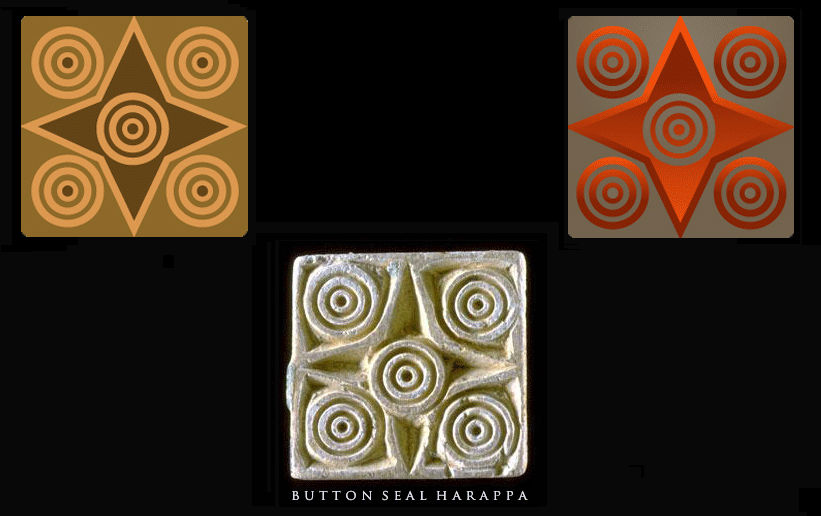February 22nd, 2016
Asko Parpola writes: "Akinori Uesugi has shown that the spread of the Kot Diji culture all over the Indus Valley is connected with the spread of a new type of stamp seal, which continues to exist in the following Harappan period. The basic figure in these Kot Diji seals consists of “concentric circles,” usually four of them placed into the four corners of a square or cross-shaped seal. A common variant has in addition a fifth figure of concentric circles in the centre of the seal. This seal type appears to be first attested at Mehrgarh in the piedmont area at the mouth of the Bolan Pass, which connects the highlands of Baluchistan with the plains of the Indus Valley.
This new type of seal – an important instrument of administration – that Uesugi has recognized to accompany the spread of the Kot Diji culture in my opinion reflects the importance that the four cardinal directions and the centre have started to play in the cosmology and political ideology of the Early Harappans. At Rahman Dheri, we have a seal where concentric circles are surrounded by “rays” [e.g. Kot Diji seal above], on the basis of which the concentric circles have astral or (rather) solar symbolism. Painted bowls from Mehrgarh VI-VII (about 3200–2600 BCE), in particular one where the field is divided into four squares occupied by sun-like circular images surrounded by “rays”, even more clearly suggest a cosmology based on the yearly course of the sun, divided into four quadrants by the equinoctial and solstitial points, which also define the four cardinal directions. Such a cosmology is undoubtedly shared by many other seals with geometric motifs, particularly those depicting the cross and swastika, but while such seals are found also in contemporary Iranian seals and can be just copies of western models, those with four or five sets of concentric circles are likely to be a creation of the Early Harappan culture and with great probability reflect its dominant ideology.
Above: On this Kot Diji phase steatite button seal from Harappa (H2000-4495 / 9597-01), traces of blue-green glaze can be seen (upper center and left center). Similar seals have been found at other Kot Diji period sites and even in distant Central Asia.
More in Asko Parpola's article Beginnings of Indian Astronomy with Reference to a Parallel Development in China from which this excerpt is extracted (pp. 40-41).

